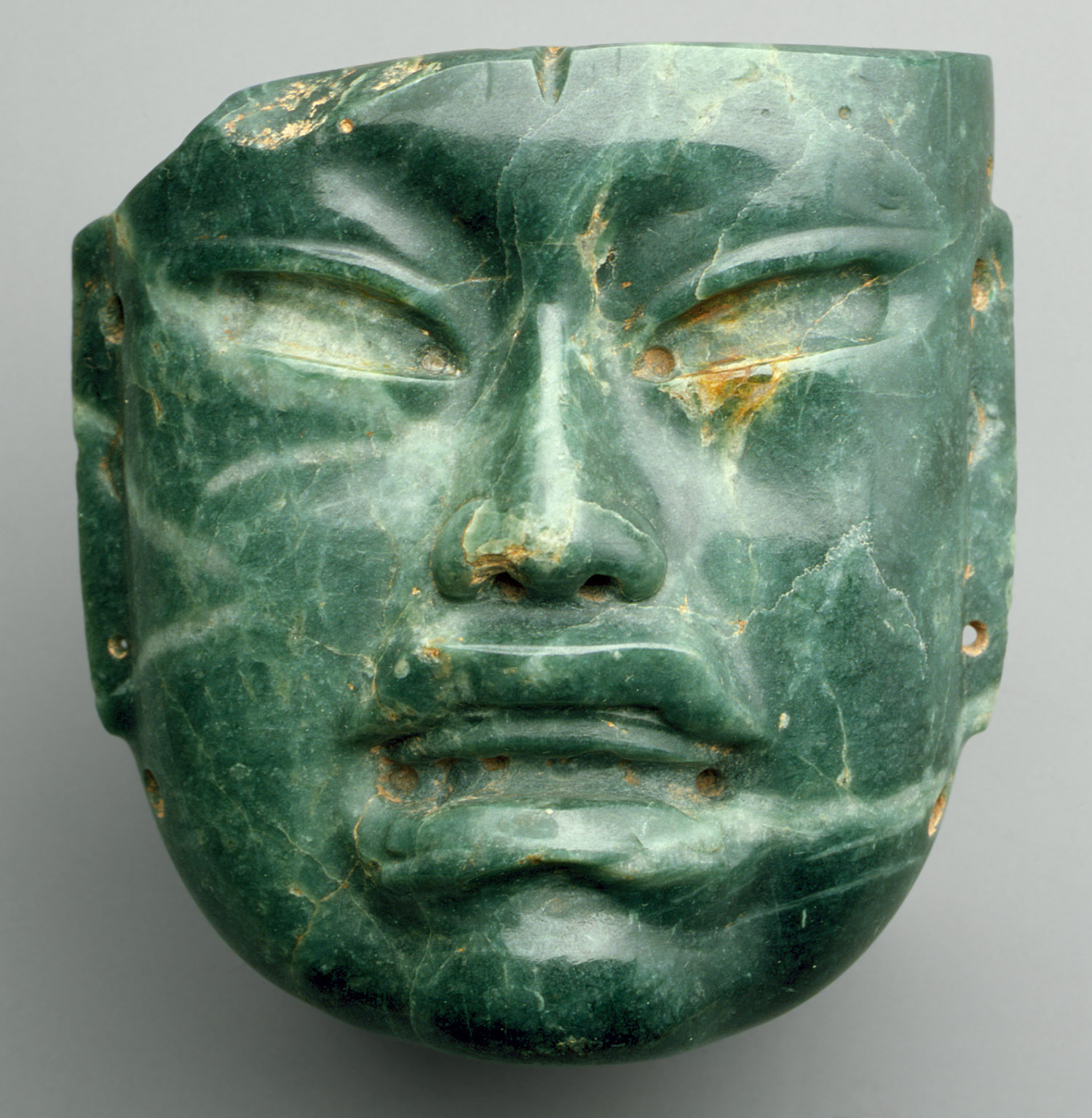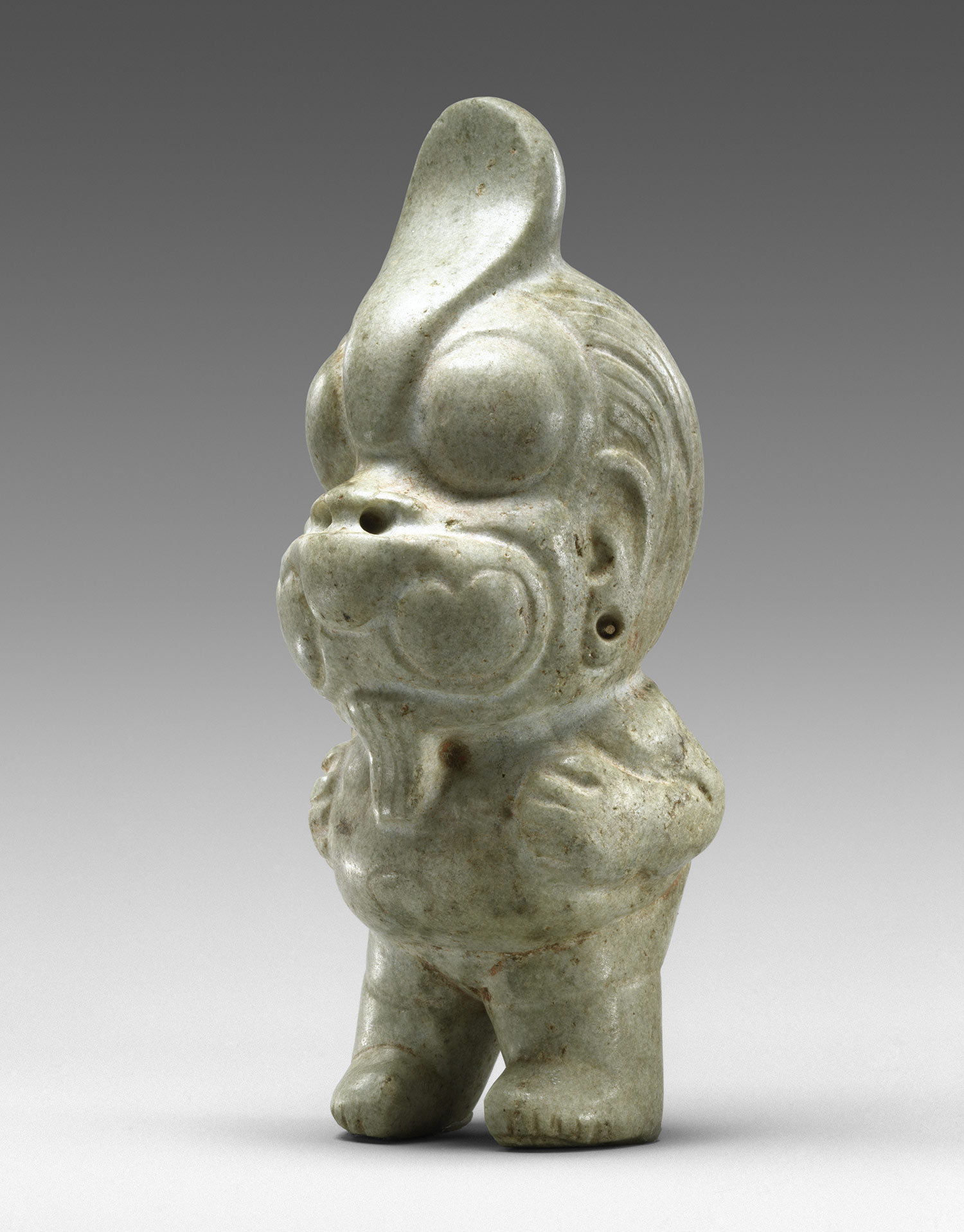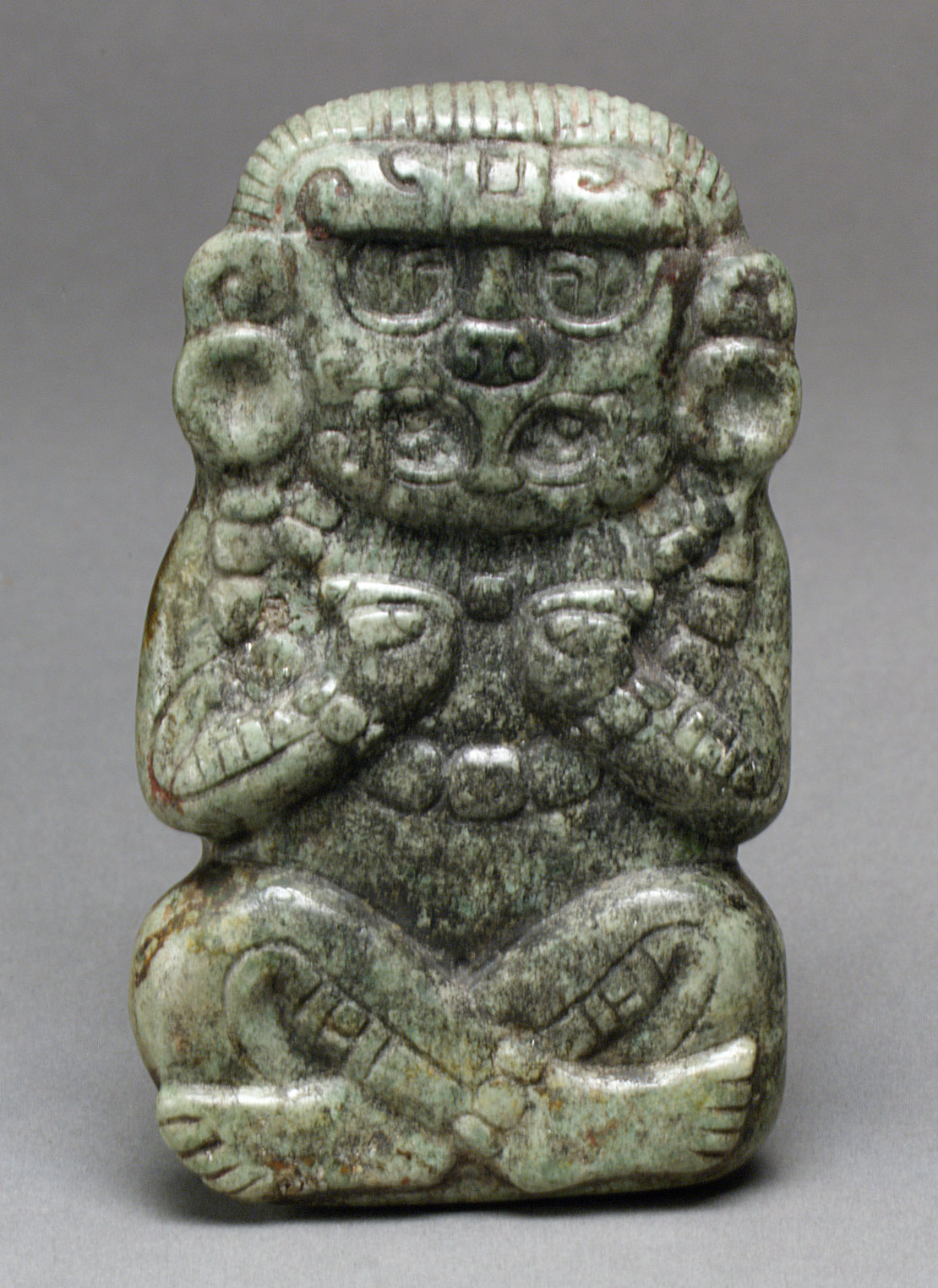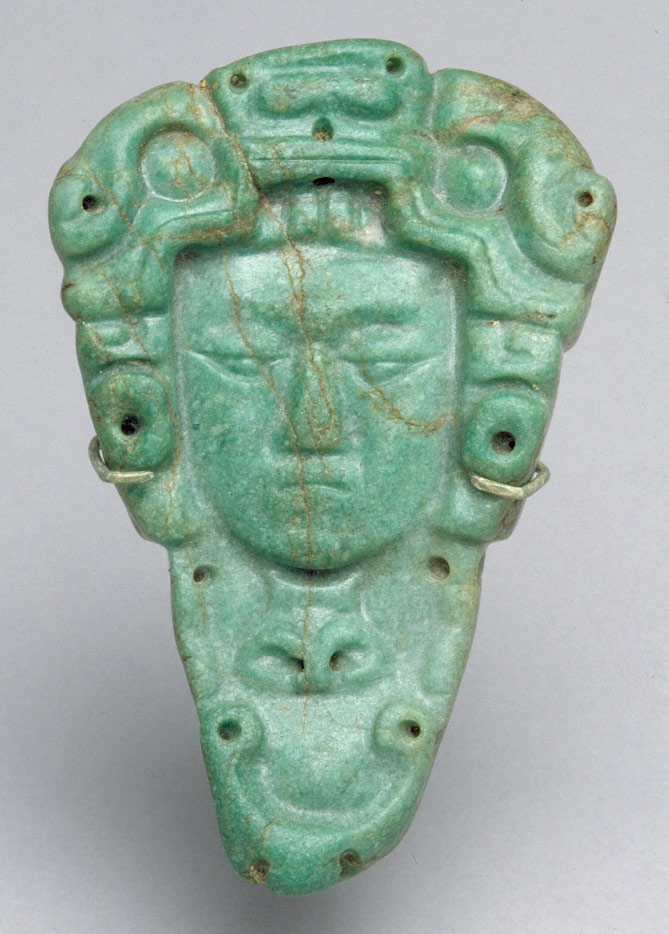






Related
Figurative works in jade were being made by 1000 B.C. by the Olmec peoples of the Mexican Gulf Coast. Professionally excavated in important burials and caches, objects of diverse sorts came to light in the 1940s and 1950s at the site of La Venta in the present-day Mexican state of Tabasco. They included human figures, human-animal composite depictions (thought to be deity images), celts (axes) both plain and incised, and personal ornaments such as earflares and beads. Generally small in scale, exhibiting an extraordinary command of the extremely difficult-to-carve stone medium, Olmec jade objects were of preference translucent blue green in color and were unsurpassed in the ancient Americas for compact, symmetrically balanced, three-dimensional form, and elegance of surface detail. Complex imagery characterizes Olmec sculpture in jade and the inclusion of feline and avian elements particularly add to the symbolic power of the depictions.
Subsequent Mesoamerican peoples also carved and revered jade. An enlarged repertory of shapes and different color preferences mark the later works. During much of the first millennium A.D., the Maya peoples of southern Mexico and adjacent Guatemala preferred jade of a bright green hue. Among their significant works are low-relief carved plaques with images of lords and attendants. Several hundred years later, at the time of the Spaniards' arrival in the Aztec capital of Tenochtitlán in the sixteenth century, jade was the most valued of substances. Reserved for the adornment of gods and royalty, and only then on specified occasions, jade was considered a symbol of life and purity.





 Timelines (4)
Timelines (4)
No comments:
Post a Comment